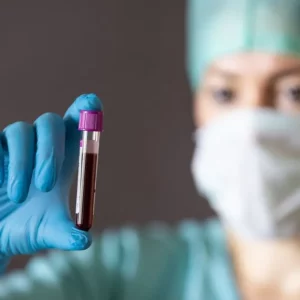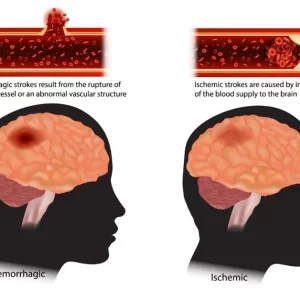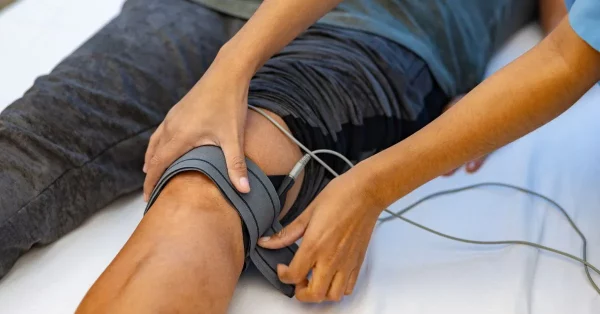When it comes to brain health, aneurysms and strokes are serious medical conditions that often get confused due to their overlapping symptoms. Despite some similarities, they are distinct in nature, causes, and treatment methods. In this comprehensive guide, we’ll break down the key differences between an aneurysm vs a stroke, explore their warning signs, causes, and treatments, and provide tips for prevention.
What is an Aneurysm?
An aneurysm is a bulge or ballooning in the wall of a blood vessel. It occurs when the blood vessel wall weakens, often due to high blood pressure, injury, or inherited conditions. While aneurysms can develop anywhere in the body, they are most commonly found in the brain and aorta.
Studies have shown that up to 4% of healthy individuals have an unruptured brain aneurysm. This increases to up to 7% of all individuals having ruptured and/or unruptured brain aneurysms. Furthermore, 10-20% of the general population has one or more miniscule aneurysms, which are smaller than 2 millimeters and asymptomatic unless they grow to become a larger aneurysm. Cerebral aneurysms are most commonly seen in women, and the risk of developing one increases with age.
Types of Aneurysms
- Cerebral Aneurysm: Occurs in the blood vessels of the brain and can lead to a life-threatening condition if it ruptures.
- Aortic Aneurysm: Develops in the aorta, the largest artery in the body, and can be abdominal or thoracic.
- Peripheral Aneurysm: Found in arteries of the legs, arms, neck, or other parts of the body.
Symptoms of Aneurysms
Aneurysms are often called “silent killers” because they rarely show symptoms until they rupture. However, unruptured aneurysms that are particularly large or put pressure on brain tissues might cause:
- Headaches
- Vision changes
- Pain near the aneurysm location
A ruptured aneurysm in the brain, on the other hand, can lead to a sudden, severe headache, nausea, vomiting, or even loss of consciousness.
Aneurysm vs. Stroke: Key Differences
While aneurysms and strokes are both serious conditions involving the brain and blood vessels, they are fundamentally different in their causes, symptoms, and outcomes. In this section, we’ll break down the key distinctions between aneurysms and strokes to provide clarity on how these conditions impact the brain and overall health.
Cause
The primary difference between an aneurysm vs a stroke lies in their causes. An aneurysm occurs when the wall of a blood vessel weakens, forming a bulge or balloon-like structure. This weakening can be due to factors such as high blood pressure, injury, or genetic predisposition. If this bulge bursts, it leads to bleeding in the brain, known as a hemorrhagic stroke.
In contrast, a stroke refers to any interruption in blood flow to the brain. Strokes can be ischemic, caused by a blood clot blocking a vessel, or hemorrhagic, resulting from a ruptured blood vessel. Not all hemorrhagic strokes are caused by aneurysms, but ruptured aneurysms are a common trigger.
Onset
The onset of symptoms distinguishes aneurysms vs strokes. Aneurysms are often silent and asymptomatic unless they rupture. When an aneurysm bursts, it causes an immediate, severe headache, often described as “the worst headache of my life.” This sudden event may also include nausea, vomiting, or loss of consciousness. Some individuals may experience “warning headaches” in the days to weeks before a major aneurysm rupture, which may signal a leak or or small bleed before a major rupture.
Strokes, on the other hand, have a more variable presentation depending on the type and area of the brain affected. Symptoms typically appear suddenly and can include numbness or weakness on one side of the body, difficulty speaking, vision problems, and trouble walking. The abrupt nature of both conditions requires urgent medical attention.
Symptoms
The symptoms of an aneurysm and a stroke also differ in nature. A ruptured aneurysm is often marked by a thunderclap headache and other signs of brain bleeding, such as stiff neck, sensitivity to light, or seizures.
In comparison, a stroke’s symptoms may be broader and include facial drooping, slurred speech, and difficulty with coordination or balance. While both conditions can cause sudden and severe symptoms, the specifics of their presentation can help healthcare professionals identify the underlying issue.
Outcomes
The outcomes of these conditions depend heavily on the timing of treatment and the severity of the incident. A ruptured aneurysm can lead to significant brain damage, coma, or death if not treated promptly. Unruptured aneurysms, however, can often be managed with monitoring or preventive interventions like surgical clipping or endovascular coiling.
Strokes, particularly ischemic strokes, require immediate treatment to restore blood flow and minimize damage. With prompt care, some individuals recover fully, while others may experience lasting effects such as paralysis, speech difficulties, or cognitive challenges. The long-term prognosis for both conditions underscores the importance of rapid response and appropriate medical care.
Prevention Strategies for Aneurysms and Strokes
While aneurysms and strokes have distinct causes, their prevention strategies often overlap since both involve maintaining healthy blood vessels and reducing risk factors. Taking proactive steps to improve overall vascular health can significantly lower the likelihood of developing either condition.
Manage Blood Pressure
High blood pressure is a major risk factor for both aneurysms and strokes. Regular monitoring and controlling your blood pressure through medications, dietary changes, and exercise can reduce strain on blood vessel walls, minimizing the risk of both conditions.
Quit Smoking
Smoking weakens blood vessels and increases the likelihood of aneurysm formation and stroke. Quitting smoking not only improves your cardiovascular health but also promotes better overall well-being.
Eat a Heart-Healthy Diet
A diet rich in fruits, vegetables, whole grains, lean proteins, and healthy fats helps maintain healthy blood vessels. Limiting salt, sugar, and saturated fat intake reduces risks associated with high blood pressure, high cholesterol, and other contributing factors.
Stay Active
Regular physical activity strengthens the heart, lowers blood pressure, and improves blood circulation. Aim for at least 150 minutes of moderate exercise per week, such as walking, cycling, or swimming, to keep your vascular system in good shape.
Control Chronic Conditions
Properly managing conditions like diabetes, high cholesterol, and atrial fibrillation is essential for preventing strokes and aneurysms. Work closely with your healthcare provider to keep these conditions under control.
Limit Alcohol and Avoid Drug Use
Excessive alcohol consumption and recreational drug use, particularly stimulants like cocaine, can damage blood vessels and increase the risk of aneurysm rupture and stroke. Moderation or complete avoidance is key.
Regular Screenings and Medications
Routine health screenings can help identify risks early. If you have a family history of aneurysms or strokes, discuss preventive screenings with your doctor. For those at higher risk, medications like blood thinners or statins may be prescribed to reduce clotting risks and maintain vessel health.
By addressing these risk factors and adopting a healthier lifestyle, you can significantly reduce your chances of experiencing an aneurysm or stroke. Prevention is not only about avoiding these conditions but also about improving your overall quality of life.
Stroke vs. Aneurysm Final Thoughts
Aneurysms and strokes are both serious, life-threatening conditions, but understanding their differences can empower you to seek timely help and adopt preventive measures. By addressing risk factors and recognizing symptoms, you can protect your brain health and overall well-being.
Always consult a healthcare professional for personalized advice, especially if you have a family history of these conditions or experience any concerning symptoms.









